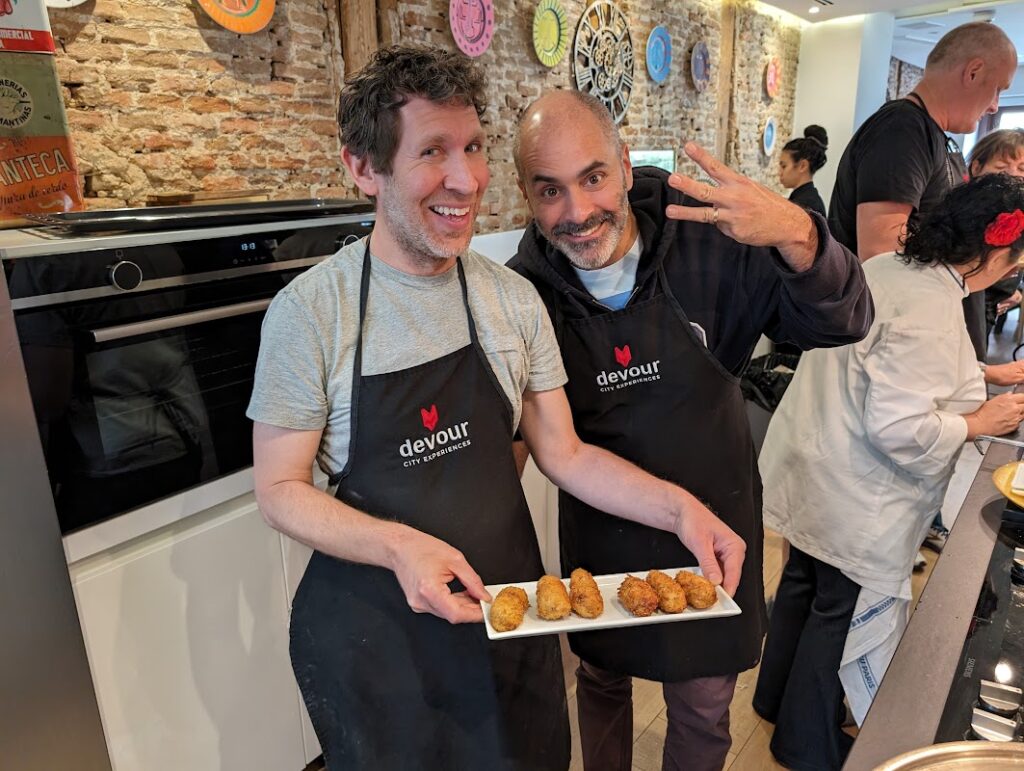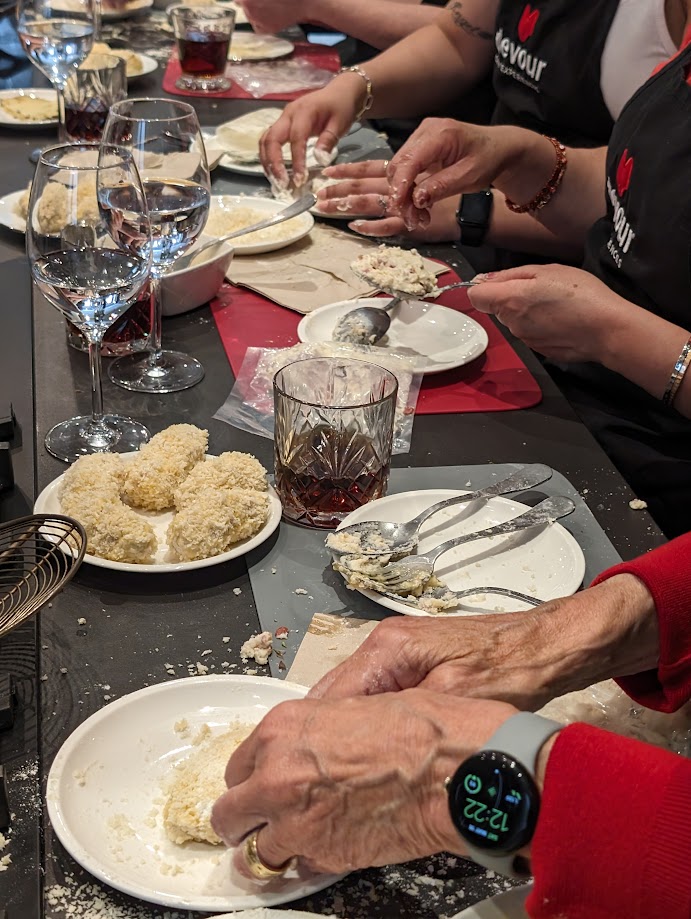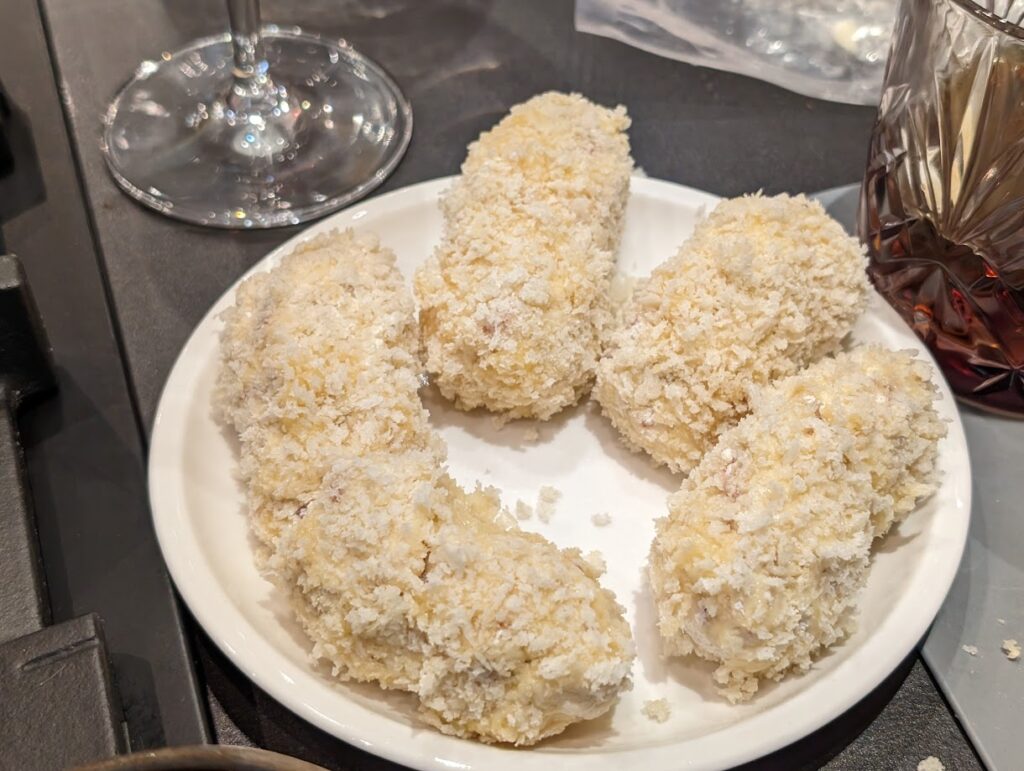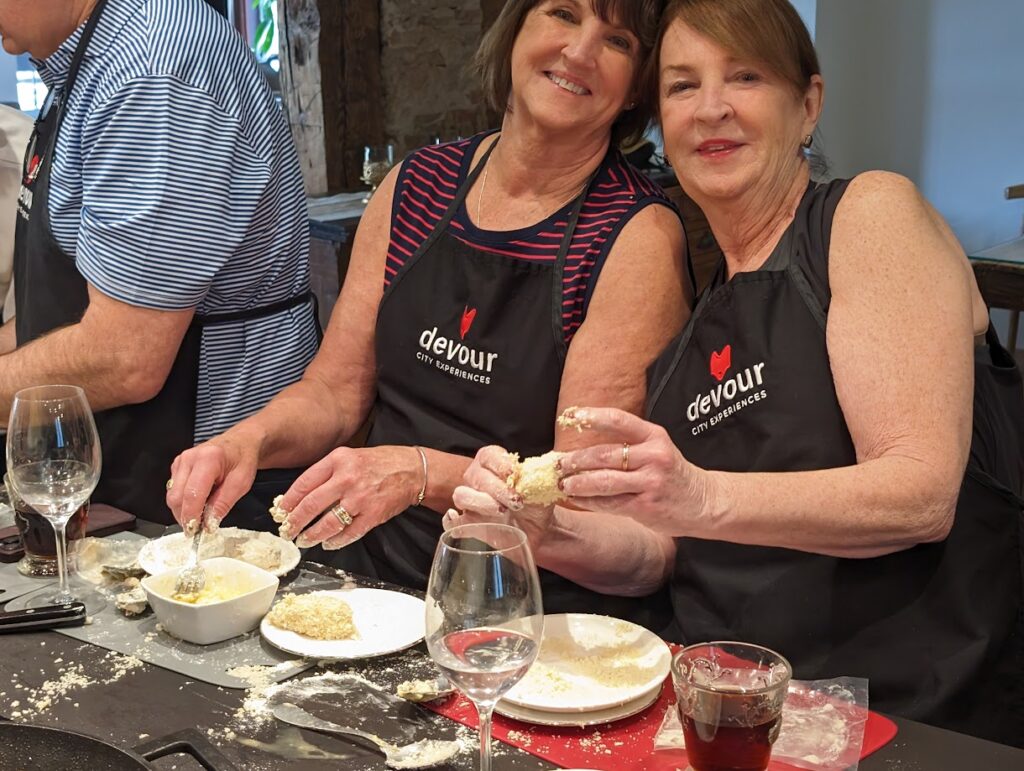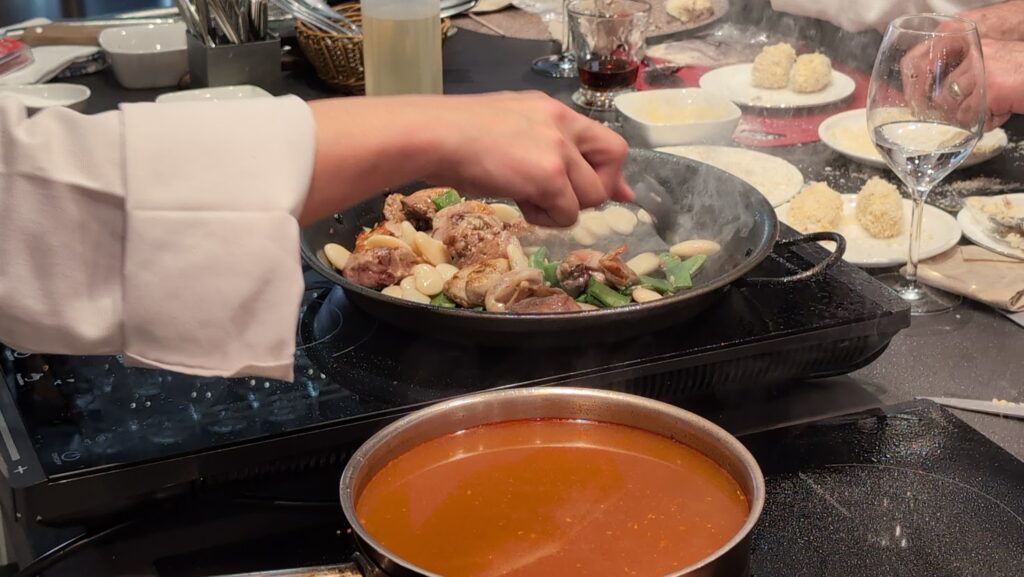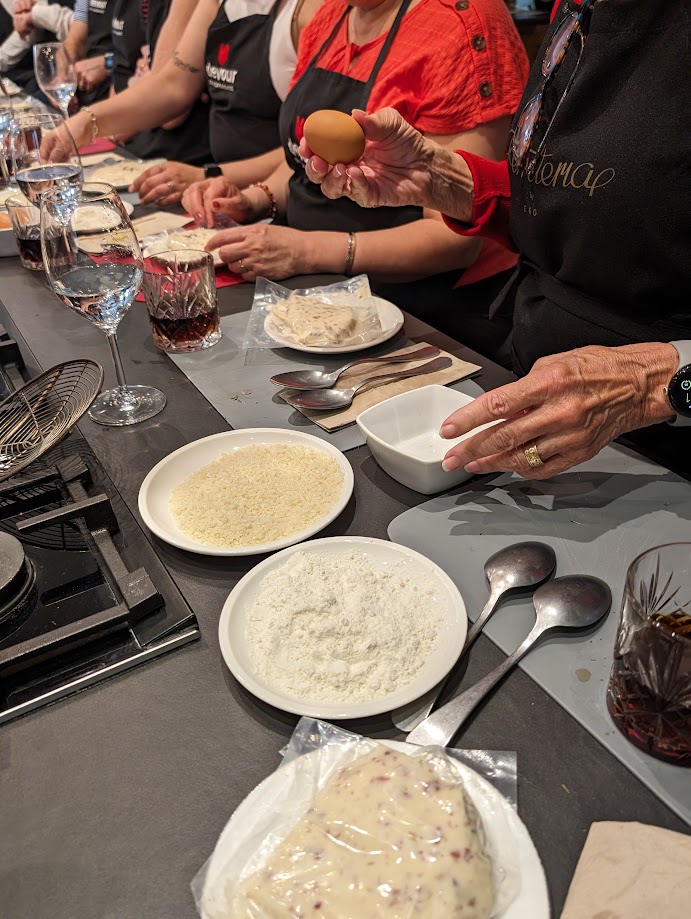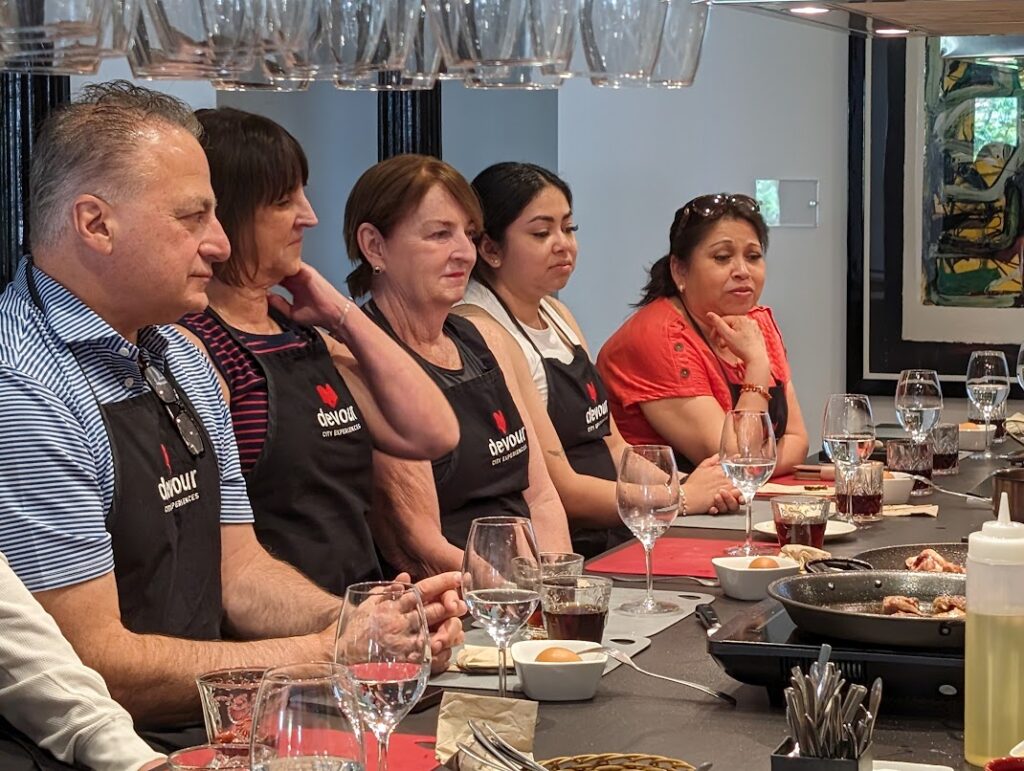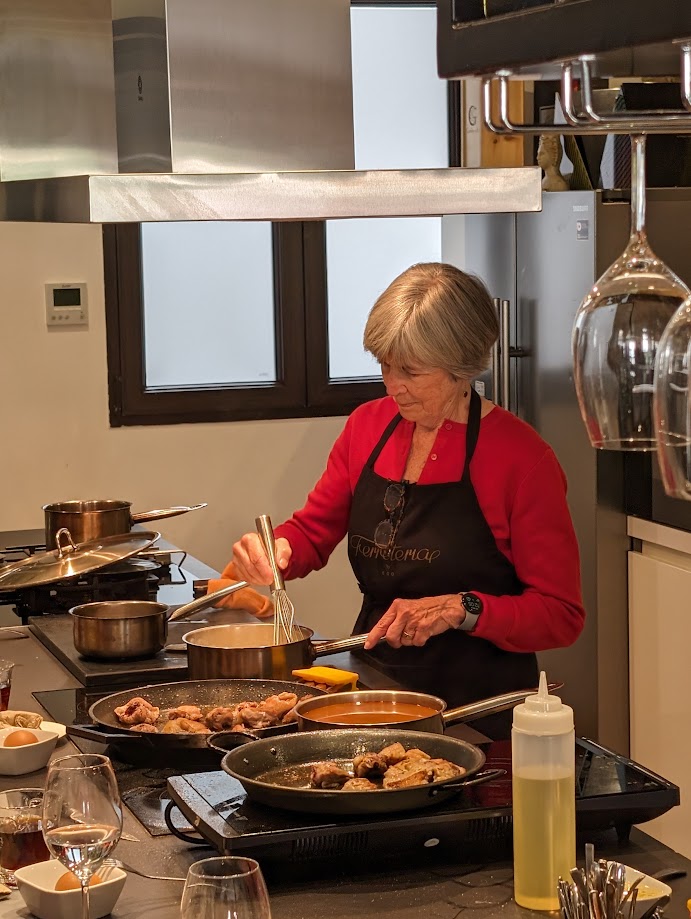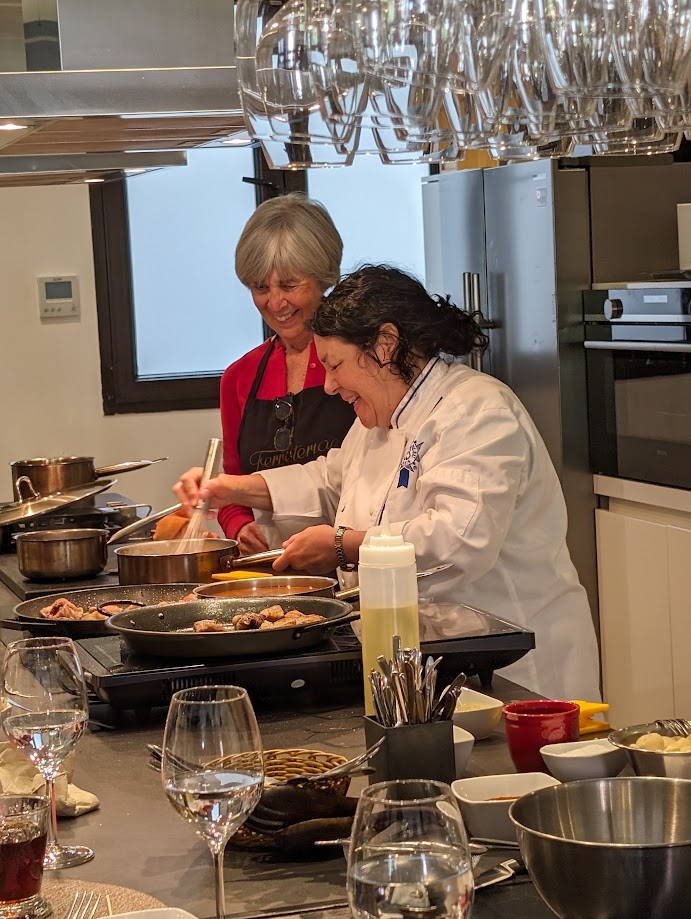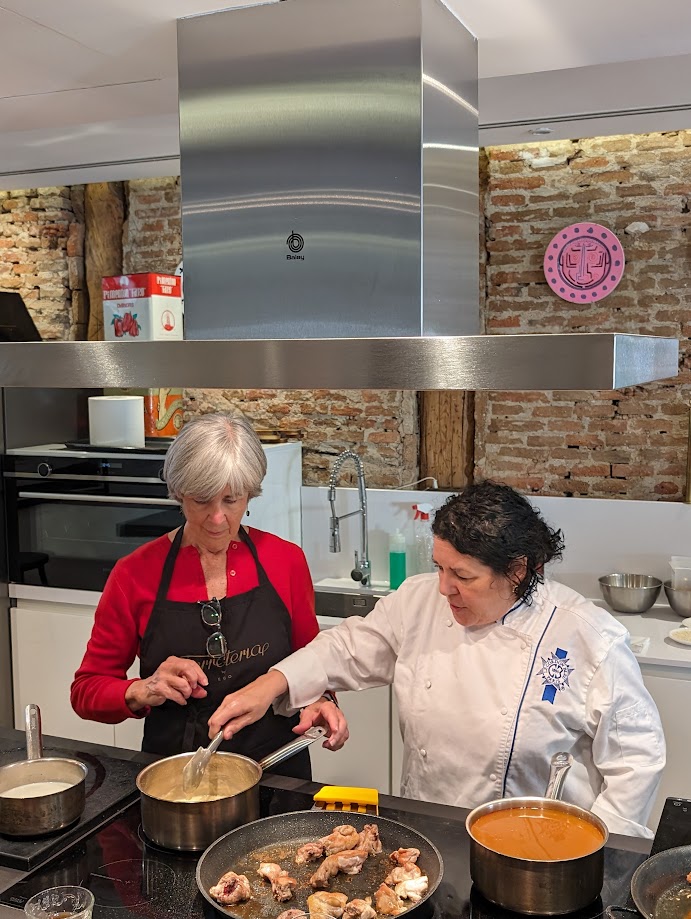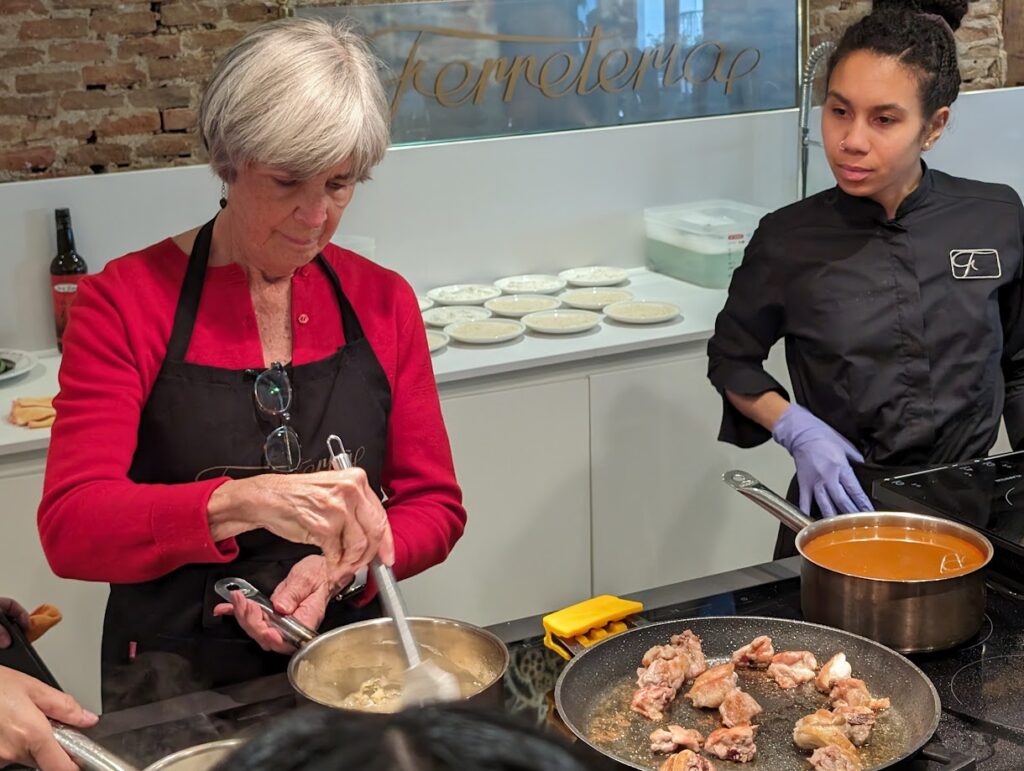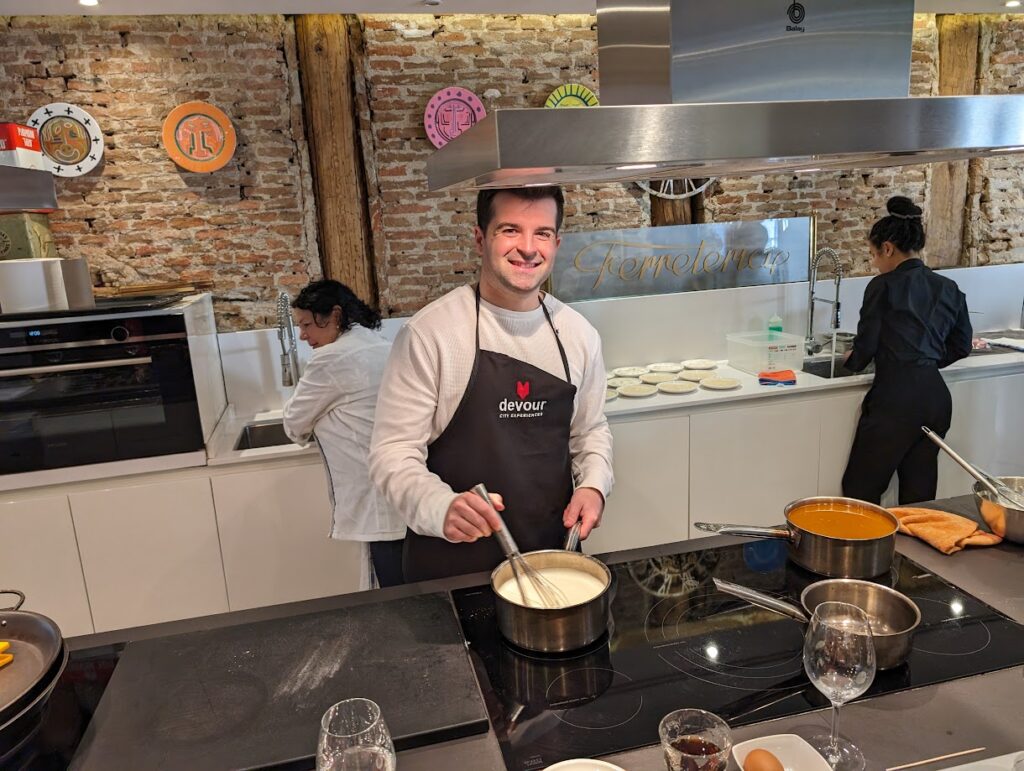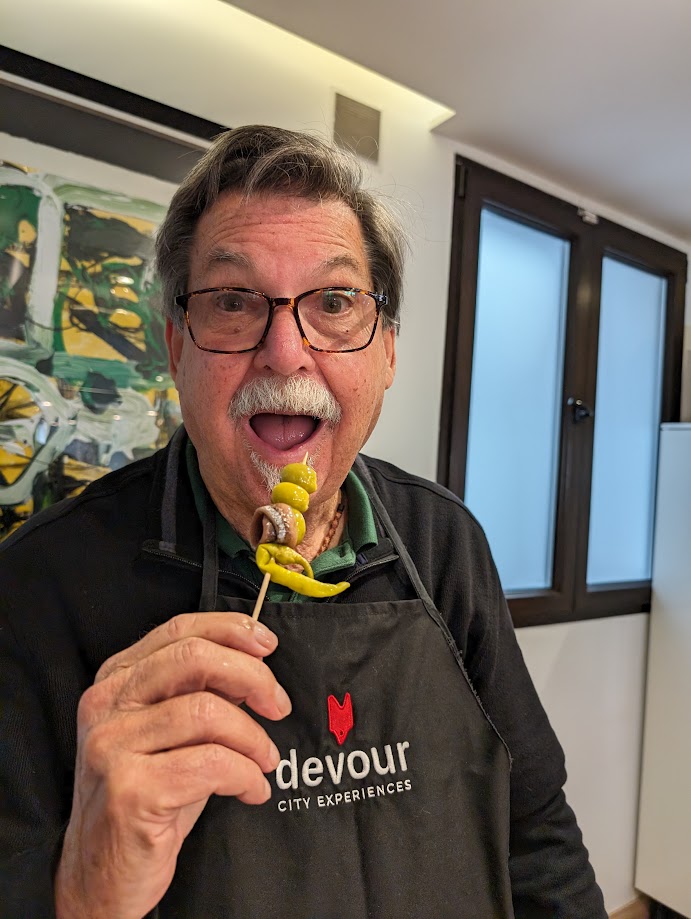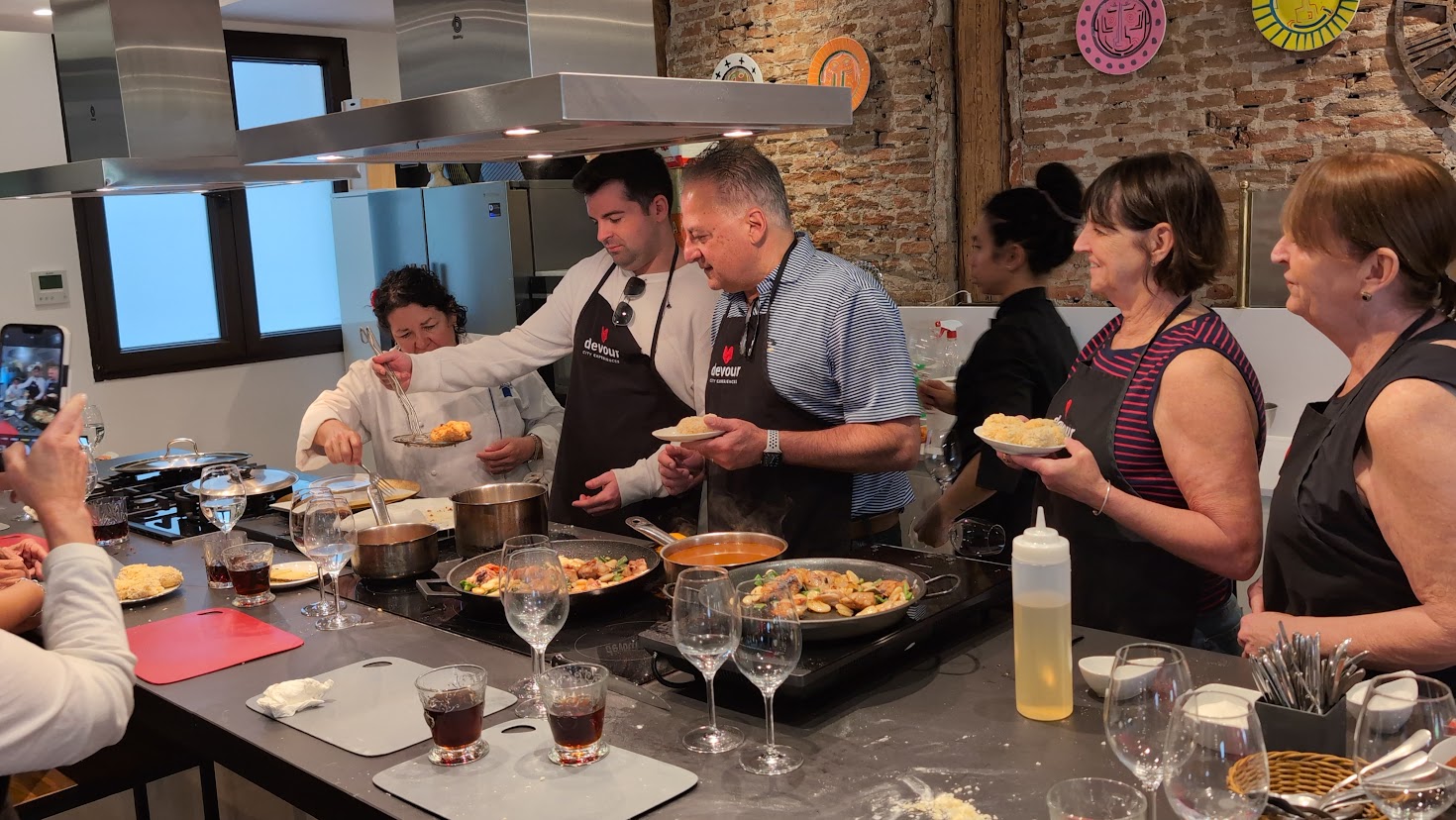One of the great attractions for us in Spain, and in Madrid specifically, is the cuisine. And any chance we get, we aim for hands-on experience to cook classic Spanish dishes.
Luckily, Devour Tours offers cooking classes in Madrid. We’ve taken Devour’s tours and classes all around Europe and know you always get more than culinary training. We knew from experience that we would learn about the local culture, must-have ingredients, and suggestions for locals’ dining and drinking favorites. That’s why we booked the four-hour Paella and Tapas: Madrid Cooking Class with Market Visit early in our three-week stay in Madrid.
Our mid-morning tour began at Plazuela Antón Martín in Huertas, a bustling neighborhood in central Madrid. This distinctive red Devour Tours bag made it easy to spot the guide/instructor, Arantxa Lamas, and fellow students. Our group was a diverse mix of nationalities – Brits, Mexicans, Filipinos – who shared a passion for meeting fellow travelers and experiencing new cultures and cuisines.
Spanish cuisine, culture, and traditions reflect the country’s rich history, including rule by the Moors for centuries. Each region boasts unique dishes shaped by geography and ethnic influences. In this class, we would taste our way around Spain without leaving the capital city. The lunch ranged from the Gilda tapa created in Basque Country to traditional paella born in coastal Valencia and Crema Catalana invented in Catalonia.
Like most cooking classes, ours began with a visit to a historic municipal market nearby where the locals buy their fresh ingredients. The benefit of going to the market with a local chef is learning the ins and outs of dealing with vendors and selecting produce and other ingredients. While the chef bought cheese, we sampled some of the dozens of olives on display.
Shopping done, Chef Arantxa led her hungry group to La Vera restaurant in a stately, historic building that once belonged to royalty. Above the restaurant, we found ourselves in a large room with an impressive full kitchen. There, the chef’s assistant had already prepped and set up cooking stations for the eager students. We scrubbed our hands and donned our aprons. We were ready to work and learn.
Our first assignment was to prepare two of the most popular Spanish tapas, the Gilda and homemade croquetas. We were especially interested in discovering the secrets of making croquetas – those crispy fried bites filled with creamy bechamel and flavored with jamon, mushrooms, cheese or seafood.
Strong, salty, pickled flavors are the hallmark of Gildas, said to be the first Basque pintxo. Using the traditional long toothpick, we skewered slippery green olives wrapped with slender anchovy filets and piquant guindilla green peppers. Designed to make you thirsty, we welcomed the glasses of vermouth served as we downed our creations in one bite.
The secret to croquetas, Chef Arantxa explained, is refrigerating the butter-rich bechamel until it is the consistency of cookie dough. Then, using two spoons, it is easily shaped into balls to be coated in flour, egg, and bread crumbs. We keep handling to a minimum so that the bechamel doesn’t soften too much. Once cloaked for flying, they can be gently rolled into the shape desired. In class, under the chef’s watchful eye, we worked in teams to slip them a couple at a time into hot oil until golden. Devour them while warm, ideally with a crisp white Spanish wine like the one served in class.
While we were filling up on croquetas, preparation of the main dish – and a major draw for the class – paella Valenciana, was well underway. While there are seafood and vegetable versions, our traditional rice was flavored with chicken, along with an intense sofrito, slow-cooked tomatoes, onions, and other aromatics. Once Chef Arantxa added the stock and it bubbled, she drizzled the rice around the pan, emphasizing that only short-grain Spanish arborio or bomba should be used. The fragrant mixture then simmers, without stirring, until the liquid is absorbed.
To keep us occupied as the paella cooked, we put the finishing touches on our classic dessert, a rich crema catalana, similar to crème brûlée. That required a lesson in how to use a kitchen blowtorch to caramelize the sugar sprinkled on top. Each of us took a turn “burning” the topping to add that signature flavor to the cool custard.
From start to finish, Chef Arantxa was both entertaining and informative. Her extensive professional cooking experience was obvious as we worked our way through the dishes, sharing tips and keeping us on our toes. A resident of Madrid, she enthusiastically shared stories about the city and food. scene with us and our fellow students, all eager to make the most of their time here. It wasn’t long before the class bonded — encouraging and celebrating each other as the hours flew by.
Our last task was to eat. We enjoyed plates of paella, along with wine, beer, and lots of laughter. And no one refused dessert; after all, we had made it ourselves. As we slipped out of our aprons, we were sated by our hearty lunch. And very satisfied with our newfound cooking skills that honor the best of Spanish cuisine.
devourtours.com/destinations/spain/madrid/
